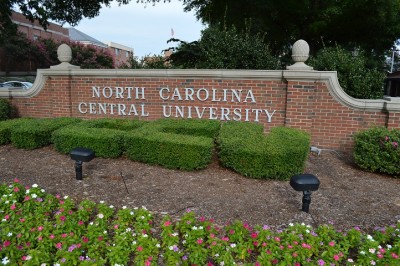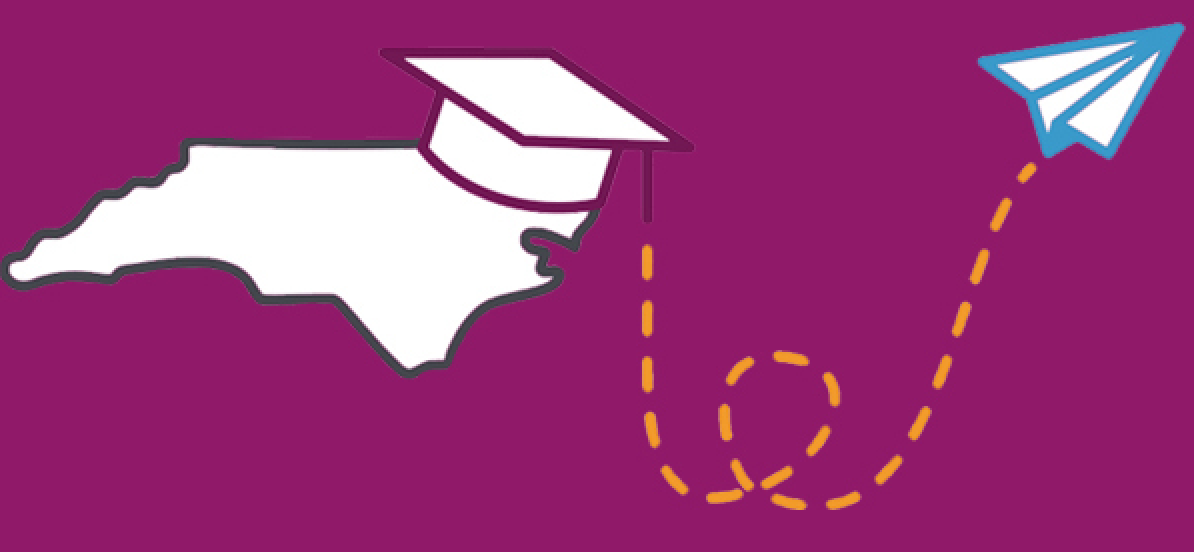North Carolina’s higher education institutions are working to increase attainment levels among our state’s most underserved populations in impressive ways.
The programs highlighted in this report offer important lessons in terms of what works and what does not.
Drawing commonalities across these lessons is the best way to move forward in creating a culture of personal, educational, and professional success for all students, particularly those most at-risk of falling short of their promise. It is the responsibility of higher education, government, business, and community partners to ensure that all students are prepared for success in a workforce that will continue to become increasingly dominated by high-skilled jobs.
The most important first step is strengthening the collaborative effort among these partners.
Students require and deserve the support system that will best help them succeed, which includes reinforcing that system with the safety nets necessary to plug the leaky educational pipeline. It is equally important to take a closer look at both the successes enjoyed by these programs and also the barriers they face in order to replicate and scale the most promising version of each initiative.
The entire country and even the world look to North Carolina as a model of higher education and as home to some of the best colleges and universities.
Only through careful self-evaluation and a deep commitment to collaboration will North Carolina keep its title as one of the best states for opportunities in higher education. The following have been identified as the most important ingredients for successful educational attainment, especially for at-risk students:
1.) Establishing a comprehensive and collaborative support network.
2.) Expanding distance education.
3.) Building a sense of community to increase accountability.
4.) Reframing metrics for success.
Establishing a Support Network
The greatest successes were seen in efforts that not only provided academic support but also created a community and a sense of pride for each student. In addition, those networks offering social supports, including workshops to manage personal finances or to learn how to dress for any given situation, offer lessons that will impact a student well beyond their time on campus.
One of the most effective ways to increase educational attainment, as evidenced by the highlighted programs, is to provide a comprehensive support network that addresses the needs of the whole student.
Of course, academics is the top priority.
Many colleges have early warning systems in place that alert faculty as soon as a student’s grades dip below a certain grade point average. This way, the support network in place is able to provide a safety net for the student by offering one-on-one tutoring and mentoring to ensure that the student’s academic standing improves before preventing him or her from graduating on time or at all.

Having support mechanisms in place to assist the student from their first point of contact with the college through degree completion is critical. Navigating the application and enrollment process is often a student’s first experience with the college. If this process is not smooth, future success is threatened. Ideally, students would be able to find support for the entire duration of their time at the college in the same place.
This is often referred to as the University College model and many experts hold this model up as one that would have far reaching positive impact on levels of attainment if it could be established in some form on every campus— public, private, and community college— across the state. Obviously, funding is one of the most pervasive constraints to this achievement. However, many campuses are building impressive support networks for their students with very limited funds, a testament to the impact and importance this initiative holds.
Expanding Distance Education
The increased access and flexibility provided by online learning is indispensable to improving attainment levels for at-risk students. Non-traditional students and students from rural areas are especially vulnerable to being shut out of the educational pipeline simply due to geography or the demands of a very busy life. This is unacceptable. Many colleges are actively expanding their distance education efforts by offering full course loads online.
Some students are able to earn a degree without ever setting foot in a traditional classroom. However, while this is certainly one possible route, attention must be paid to the ability of students to access online educational opportunities on their end. High-speed internet is not widely available throughout the state, especially in rural areas. This disproportionately affects low-income residents.
Without fast, reliable internet access, the best distance education programs at our colleges and universities might as well not exist for a numerous North Carolinians.
Nearly 25 percent of North Carolina’s population lives in rural areas.1 While North Carolina is fortunate to have an excellent community college system that reaches every corner of the state, there are still some counties that have no institution of higher education. Distance education is the only option for many rural residents to earn a post- secondary degree. In order to close the gap in educational attainment for at-risk students, it is imperative that statewide access to broadband internet be part of the equation.
Building Community
Evidence showing that a strong community boosts academic performance is not hard to come by. Strong relationships between a student and his faculty and peers provides encouragement, boosts confidence, and provides a sense of accountability.
Much of the anecdotal evidence provided by student participants of the programs highlighted attributed their success to the accountability they felt to attend class, follow through, and graduate. This is especially true for students who come from a culture or family where education is not highly valued or, in some cases, where it is threatening. Students with this background are especially vulnerable to slipping from the educational pipeline and stand to benefit greatly from a strong sense of community, where they can meet and rely on others who support their educational and professional pursuits.
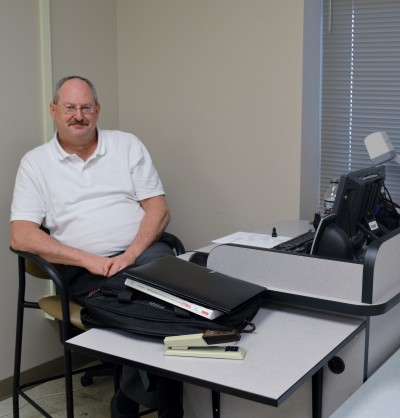
Building relationships and becoming engaged in the community through service learning programs work to build confidence and a sense of responsibility in the student to improve the lives of others. Many colleges offer community service projects that relate to the subject matter of particular courses.
Student engagement can be difficult, particularly at community colleges where students have so many other demands on their time and are not traditional, residential students. Providing opportunities for at- risk students to support others with similar backgrounds can have a positive impact on overall attainment numbers. In fact, service-learning students have higher success rates overall in retention from semester to semester, higher grades, and higher levels of completion.2
As mentioned, at Fayetteville State University, the Minority Male Mentoring program offered participants a unique bow tie that indicated inclusion and success in the program. While the bow tie itself is not unique, its symbolic representation is. For many participants, being a part of a positive community to provide support, friendship, and guidance is the most important experience. The power of community to build self- worth and improve chances for academic, professional, and personal success cannot be underestimated.
Reframing Success
Traditional ways of measuring educational attainment, such as enrollment numbers and time to graduation and graduation rates, are simply not sufficient and do not reflect the big picture of what it means to successfully prepare a student for a lifetime of professional and personal achievement.
This is especially true for community colleges, where the student profile varies greatly, not only from four-year institutions, but even from one community college to another. Most community college students are part-time, which means they will not graduate in the traditional two years. Also, it is not uncommon for one student to attend several schools, much in the same way that young professionals today do not expect to hold the same job for a lifetime.
However, simply because a student did not graduate from one school should not mean that the student was not successful or that the institution failed. There are additional, nuanced ways to determine and define success.
The U.S. Department of Education recognized this and now measures community colleges based on three-year graduation rates.3 This is an improvement, but still does not offer the most accurate reflection of the ability of community colleges to successfully prepare its students. For example, success rates should be measured by the goals of each unique student.
One important role of higher education, and community colleges in particular, is to prepare its students to become employed in their field of study.
An accurate measurement would be to determine whether a student gains employment in the field for which they enrolled. However, the federal government does not combine education and employment data in that way. This method would be a strong measure of success, especially at community colleges where training is often aligned with current workforce demands.4
Another potential way to measure student success, regardless of graduation, is whether the student left the institution in good academic standing. This could carry over into a successful transfer to a different institution or to positive on-the-job training. Because the majority of students stop out of school for non-academic reasons— such as family demands, finances, or health— there is a better chance they will choose to continue their education at a later point.5
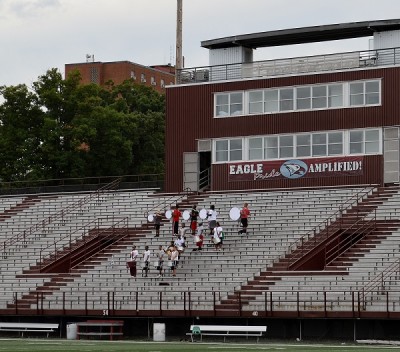
There are many important qualifications to consider when measuring the success of institutions in student performance. Some colleges enroll a larger number of students from a low socioeconomic background. Therefore, those colleges are pulling students from a greater deficit, but are compared to other schools that did not have the additional hurdle to overcome.
For example, many students attending Central Piedmont Community College come from communities where poverty is more concentrated and pervasive, and where the secondary education is not as strong as in other parts of the state. The grade point average for students who enroll immediately after high school graduation is an average of 2.3, compared to the statewide average of 2.8. Pulling data on a student’s GPA when he or she leaves CPCC, whether with a credential or not, is a simple statistic to obtain and could be used as a baseline metric for success across all institutions of higher education.6
Another important option for measuring student success should be based on his or her ability to repay student loans upon graduation. This would reflect consistent employment with paycheck that allows for basic cost of living as well as loan repayment.
While there have been positive changes for educational success measurement, more needs to be done to take into consideration the unique situation of each student as well as each institution of higher learning. Each student has a very different goal in mind when enrolling in higher education. For some, it is degree completion; for others it is learning a specific skill without necessarily receiving a degree or credential.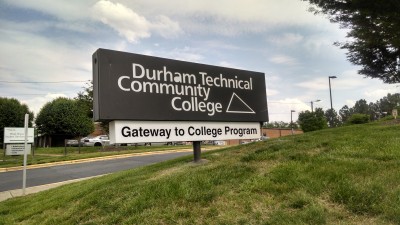
Similarly, each college (whether public, private, or community college) provides educational services differently because they are each serving a different student body with unique needs. These nuances should be taken into account when measuring the success of students and the institutions that prepare them, in order to shape a more complete view of how North Carolina measures up in terms of college attainment.
Introduction Part One Part Two Part Three
Promising Programs Statewide: Fayetteville State University
Promising Programs Statewide: Elizabeth City State University
Promising Programs Statewide: College of The Albemarle
Promising Programs Statewide: Asheville-Buncombe Technical Community College
Promising Programs Statewide: Bladen Community College
Snapshot: Veteran and Military Students
Promising Programs Statewide: UNC-Greensboro
Promising Programs Statewide: Bennett College
Promising Programs Statewide: University of North Carolina at Charlotte
Promising Programs Statewide: University of North Carolina at Pembroke
Michelle Goryn is a writer and public policy consultant in Raleigh, NC.
Paige C. Worsham is Senior Policy Counsel with the North Carolina Center for Public Policy Research and conducted the interviews and convenings for this project.
The N.C. Center for Public Policy Research is grateful to numerous, generous supporters. Major funding for this project is provided by the Lumina Foundation for Education, with additional funding from the James G. Hanes Memorial Fund, and the Hillsdale Fund.

